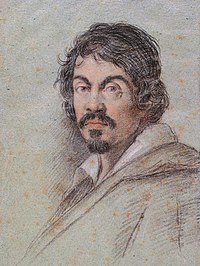

445 years ago on September 29, 1571 in the north of Italy in a small town of Caravaggio in the family of the well-endowed architect Signor Fermo Merizi, a son was born. Perhaps, had it not been for Michelangelo Merisi and Caravaggio, the entire history of painting would have followed a different path of development. His art had a huge impact – Rubens, Rembrandt, Velasquez, Zurbaran, Vermeer and many other great artists took over from Caravaggio the techniques of black and white modeling – kyaroskuro, realistic interpretation of religious subjects, bold angles and complex compositional decisions.
After the mother’s death, the artist, having taken his share of the inheritance, moves to Rome. Dramatic stories, original compositions and a sharp cut-off of light and shadow modeling are characteristic features of Caravaggio’s painting. His work was different from the popular at that time mannerism, but there were many admirers of his talent, the artist received a lot of orders. The opponents of his work were the church, because depicting religious subjects, Caravaggio destroyed all existing at that time standards and canons.
Along with the growing fame, the cases of participation of Caravaggio in scandalous incidents also increased. More and more, he showed signs of his character as a quick-tempered, self-centered person who lived one day. In May 1606, during a quarrel, Caravaggio was killed by Ranuccio Tommasoney. The artist himself was wounded and taken away by friends from Rome. The court sentenced him to death, and for his capture was assigned a reward.
In 1607, he moved to live in Malta. And again there is a quarrel with a noble knight, whom he wounded. Then a prison, an escape, an exception to the knightly order. Later, Caravaggio becomes aware that the wounded knight sent killers to him, the artist returns to Naples, he is haunted by fear, he even sleeps with a dagger. But in the autumn of 1609 mercenaries, overtaking Caravaggio on the threshold of the tavern, struck him with daggers in the face.
In 1610, on July 18, Miquelangelo Merisi da Caravaggio dies of malaria, and on July 31 in Rome, where the artist so wanted to return, the papal decree on pardoning Caravaggio was promulgated and a report about his death was published.
The significance of Caravaggio is enormous, his painting has become a literal reproduction of life. Art from now on was not focused primarily on the ideal, on the sublime, it began to notice in nature and in life the simultaneous presence of opposites.